Data Transmission Service (DTS) supports data migration, change tracking, and real-time data synchronization in various scenarios.
Database migration with minimized downtime
To ensure data consistency, traditional migration requires that you stop writing data to the source database during data migration. Depending on the data volume and network conditions, the migration may take several hours or even days, which has a great impact on your businesses.
DTS provides migration with minimized downtime. Services are always available except when they are switched from the source instance to the destination instance. The service downtime is minimized to minutes. The following figure shows the architecture of data migration.
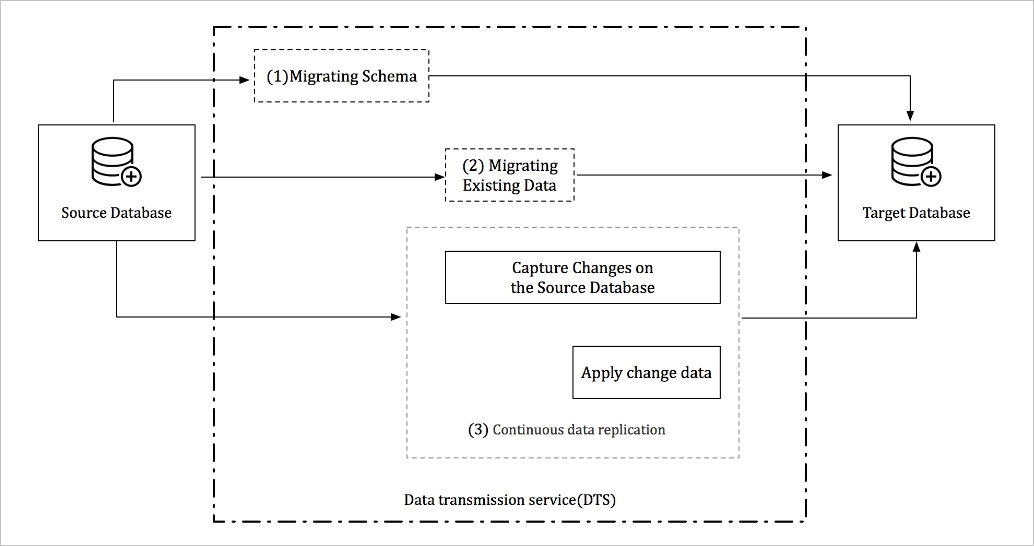
The data migration process includes schema migration, full data migration, and incremental data migration. During incremental data migration, the data in the source instance is synchronized to the destination instance in real time. You can verify businesses in the destination database. After the verification succeeds, you can migrate businesses to the destination database.
Geo-disaster recovery
If your businesses are deployed in a single zone, service interruption may occur because of force majeure factors such as power failure and network disconnection.
In this case, you can build a geo-disaster recovery center in another zone to ensure service availability. DTS synchronizes data between the geo-disaster recovery center and the business center in real time to ensure data consistency. If a failure occurs in the business center, you can switch the traffic to the geo-disaster recovery center.
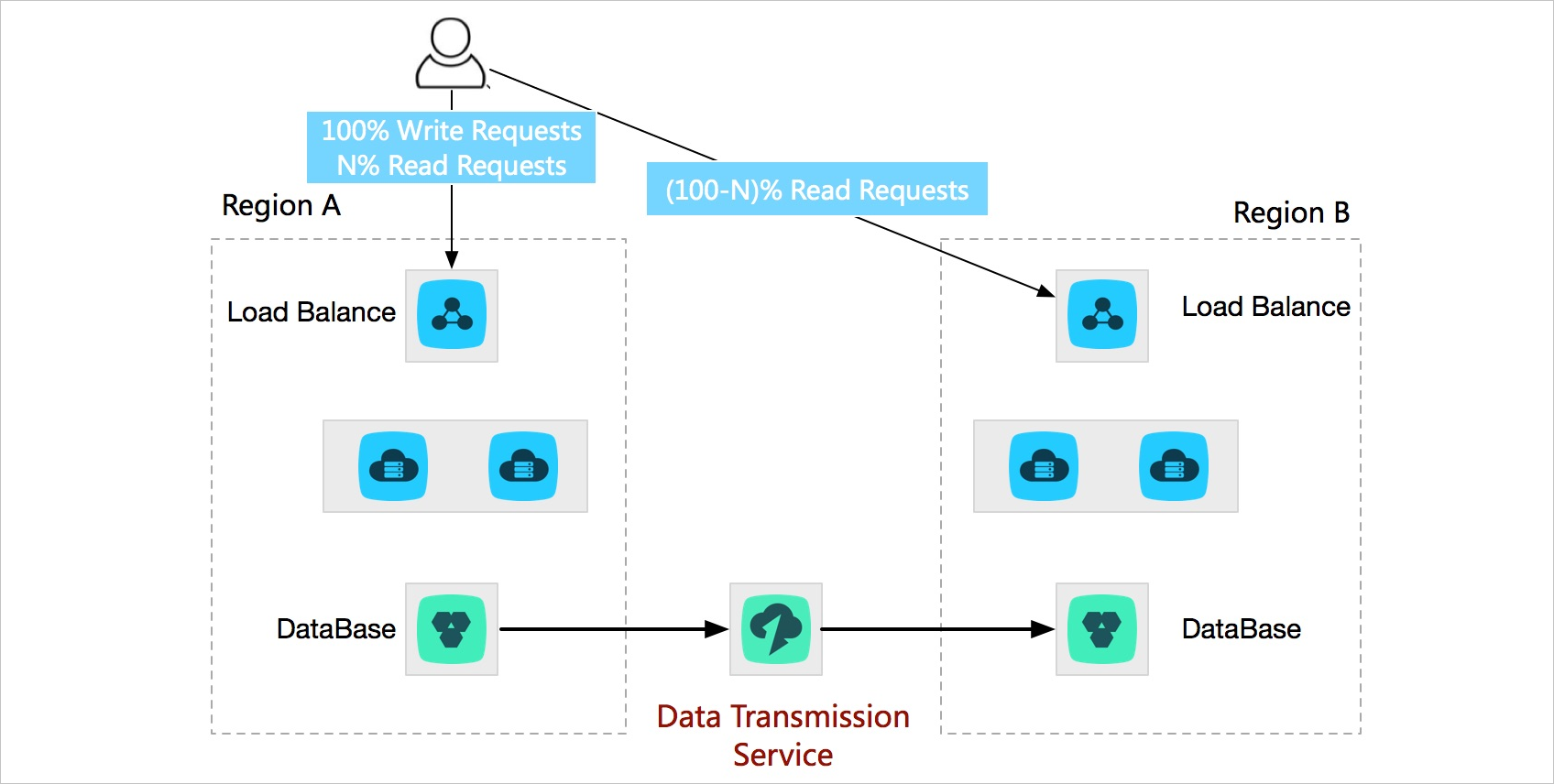
Active geo-redundancy
With the rapid development of businesses and the increase in the number of users, you may encounter the following issues if you deploy businesses in a single region:
- Users are distributed across a wide range of geographical locations, and distant users have high access latency, which affects user experience.
- The scalability is limited by the capacity of infrastructure in a single region, such as power supply and network bandwidth.
To solve the preceding issues, you can build multiple business units in the same city or different cities. DTS enables two-way real-time data synchronization between business units to ensure global data consistency. If a failure occurs in a business unit, you only need to switch the traffic of this business unit to another business unit. The businesses can be recovered within seconds. The redundancy of multiple business units ensures high availability.
You can also distribute traffic across business units based on a specific dimension. For example, you can reschedule the traffic of each business unit based on the region to allow users to access the nearest node. This reduces network latency and improves user experience. The scalability is no longer limited by the capacity of infrastructure because business units are distributed across different regions.
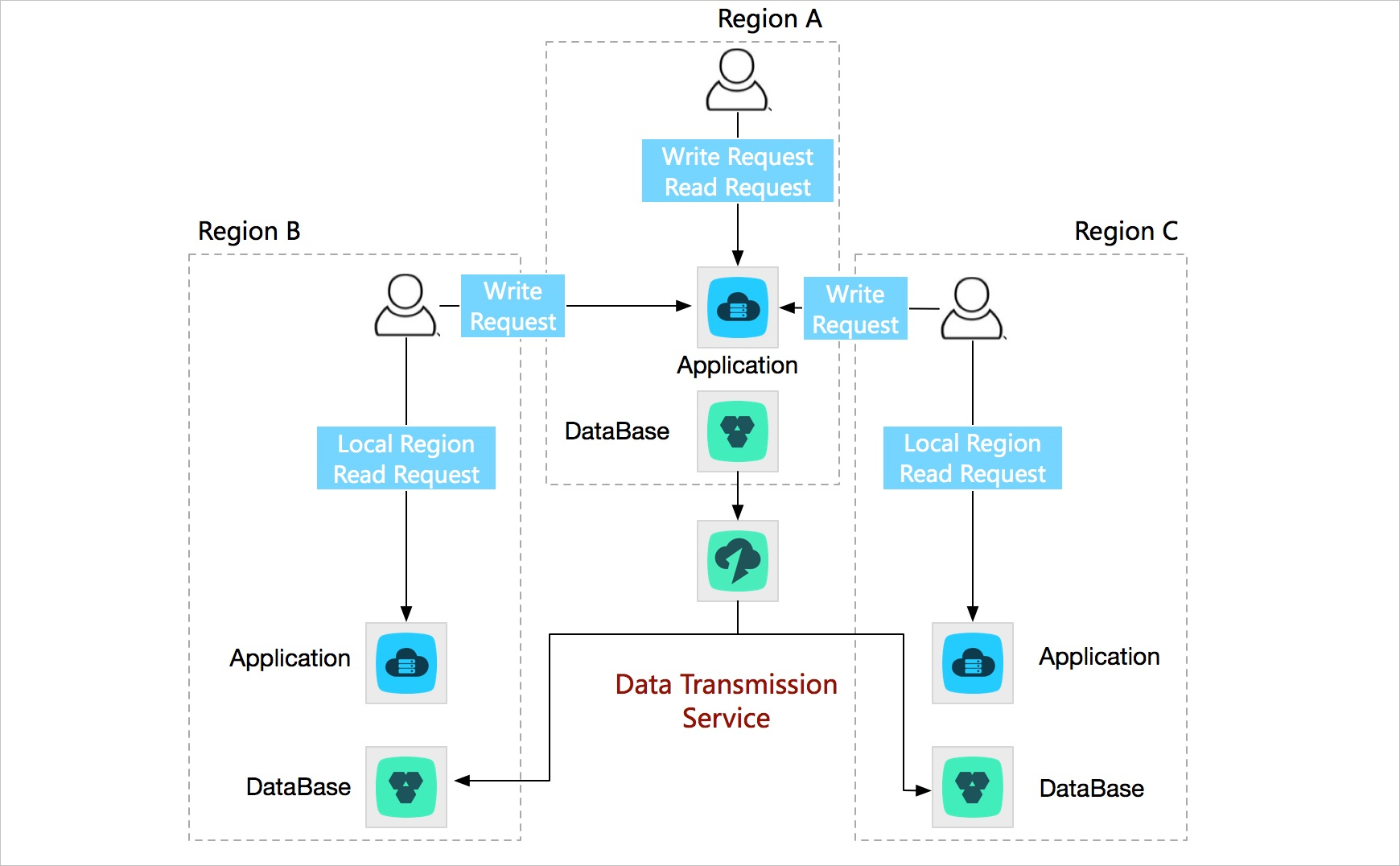
Custom BI system built with more efficiency
User-created BI systems cannot meet increasing requirements for real-time capability. Alibaba Cloud provides complete BI systems. DTS allows you to synchronize data in real time from user-created databases to Alibaba Cloud BI storage systems, such as MaxCompute. DTS helps you build a custom BI system that meets your business requirements on Alibaba Cloud.
Real-time data analysis
Data analysis is essential in improving enterprise insights and user experience. With real-time data analysis, enterprises can adjust marketing strategies to adapt to changing markets and higher demands for better user experience.
With the change tracking feature provided by DTS, you can acquire real-time incremental data without affecting online businesses. You can use the DTS SDK to synchronize the subscribed incremental data to the analysis system for real-time analysis.
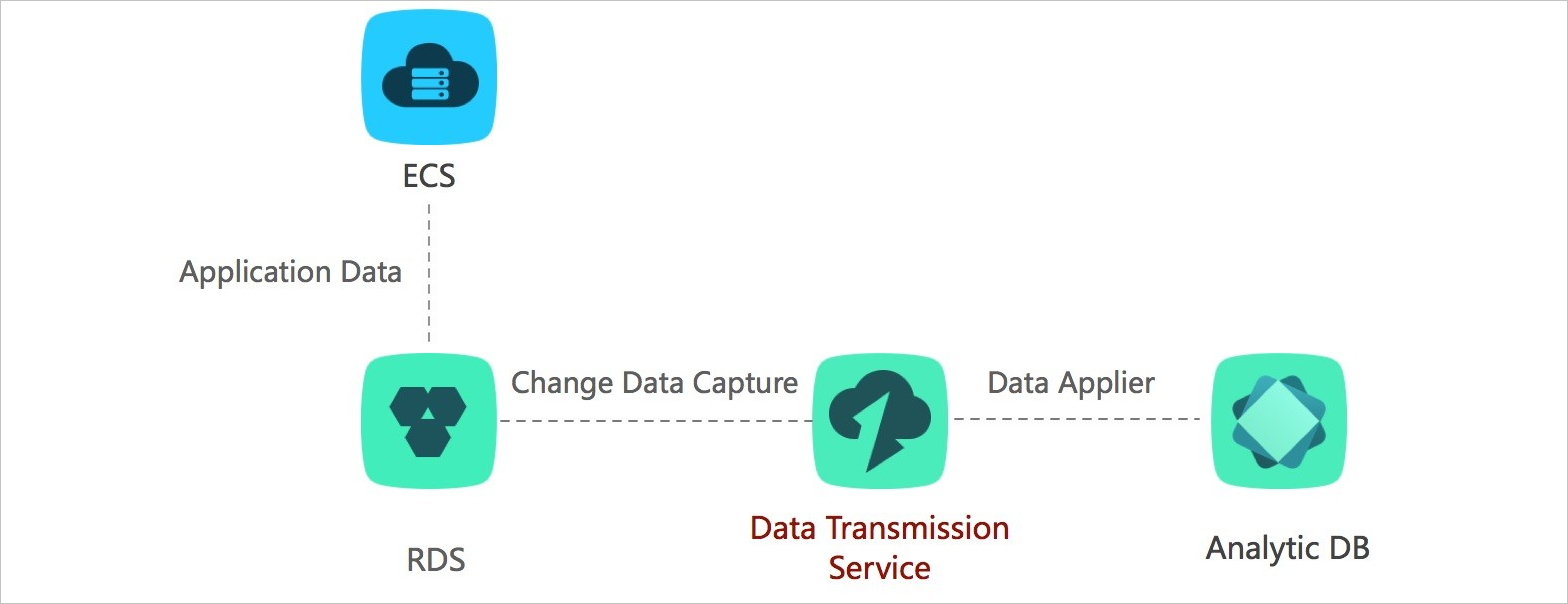
Lightweight cache update policies
To accelerate access speed and improve concurrent read performance, a cache layer is used in the business architecture to receive all read requests. The memory read mechanism of the cache layer can help to improve read performance. The data in the cache memory is not persistent. If the cache memory fails, the data in the cache memory will be lost.
With the change tracking feature provided by DTS, you can subscribe to the incremental data in databases and update the cached data to implement lightweight cache update policies.
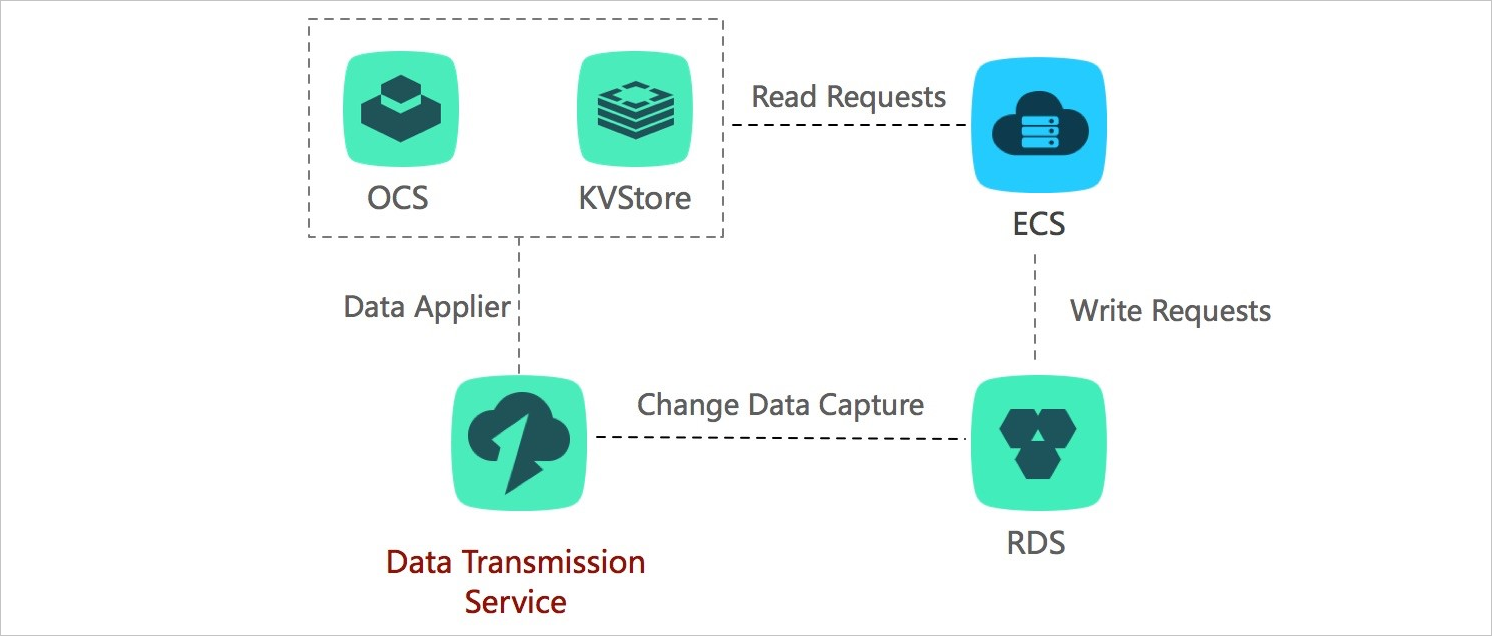
Benefits
- Quick update with low latency
The business returns data after the database update is complete. For this reason, you do not need to consider the cache invalidation process, and the entire update path is short with low latency.
- Simple and reliable applications
The complex doublewrite logic is not required for the applications. You only need to start the asynchronous thread to monitor the incremental data and update the cached data.
- Application updates without extra performance consumption
DTS retrieves incremental data by parsing incremental logs in the database, which does not affect the performance of businesses and databases.
Business decoupling
The e-commerce industry involves many different types of business logic such as ordering, inventory, and logistics. If all of these types of business logic are included in the ordering process, the order result can be returned only after all the changes are complete. However, this may cause the following issues:
- The ordering process consumes a long period of time and results in poor user experience.
- The business system is unstable and downstream faults will affect service availability.
With the change tracking feature provided by DTS, you can optimize your business system and receive notifications in real time. You can decouple different types of business logic and asynchronously process data. This makes the core business logic simpler and more reliable. The following figure shows the architecture of business decoupling.
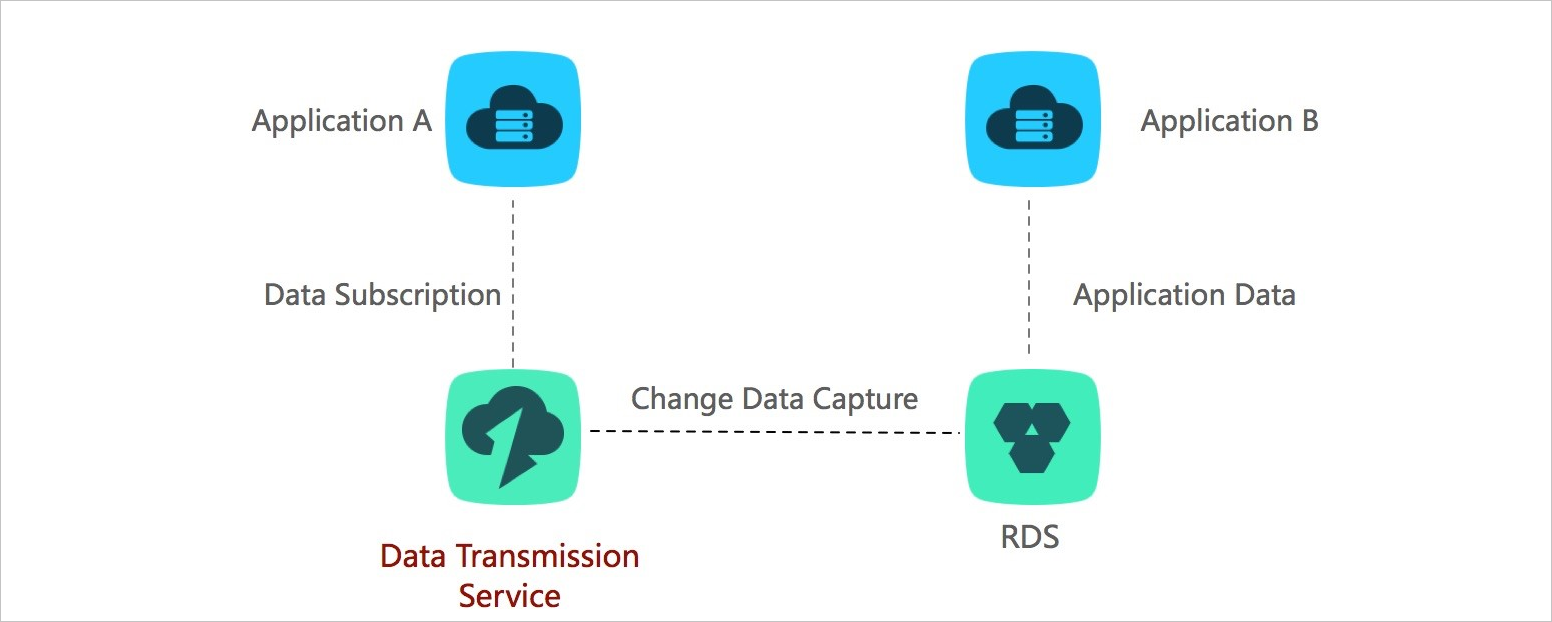
In this scenario, the ordering system returns the result after the buyer places an order. The underlying layer obtains the data changes that are generated in the ordering system in real time by using the change tracking feature. You can subscribe to these data changes by using the DTS SDK, which triggers different types of downstream business logic such as inventory and logistics. This ensures that the entire business system is simple and reliable.
This scenario has been applied to a wide range of businesses in Alibaba Group. Tens of thousands of downstream businesses in the Taobao ordering system are using the change tracking feature to retrieve real-time data updates and trigger business logic every day.
Scalable read capability
A single database instance may not have sufficient resources to deal with a large number of read requests. You can use the real-time synchronization feature of DTS to build read-only instances and distribute read requests across these read-only instances. This allows you to scale out the read capability and relieve the pressure on the primary database instance.